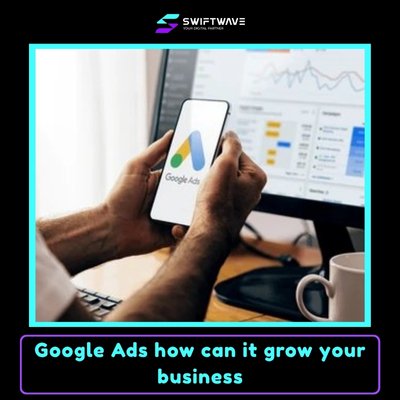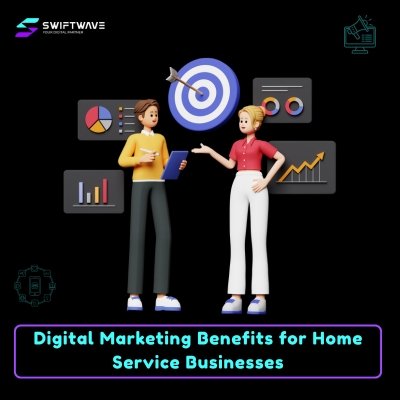Email Marketing continues to be one of the most powerful and cost-effective tools for businesses, even in 2024. Despite the rise of social media platforms, AI-driven ads, and influencer campaigns, email remains a direct and reliable channel for reaching customers.
It allows brands to build long-term relationships, nurture leads, and drive measurable sales all while maintaining control over their audience data.
In a landscape where algorithms constantly change and ad costs fluctuate, email stands out for its stability, precision, and return on investment.
Whether you’re a startup or an established business, mastering email marketing can significantly impact your growth and retention strategies.
Is Email Marketing Still Relevant in 2024
In this guide, we will explain whether Email Marketing is still relevant in 2024, supported by real data, insights, and practical strategies for success.
The Case for Email: Usage, Reach & Returns
Email marketing remains one of the few digital channels that consistently delivers measurable, long-term results. As of 2024, over 4.5 billion people use email globally that’s more than half the world’s population.
The daily volume of emails exchanged is estimated at 376 billion, proving that email is still a core communication tool for individuals and businesses alike.
Unlike social platforms that depend on changing algorithms, email gives direct access to your audience without external interference. It’s a channel you own, not one rented from a tech giant.
From a business standpoint, email marketing continues to dominate ROI rankings. On average, for every $1 spent on email marketing, businesses generate $36 to $40 in return.
That’s a performance few marketing tactics can match. Email marketing’s strength lies in its versatility it can nurture leads, retain customers, promote offers, and provide post-purchase support all in one channel.
It’s also more affordable compared to paid ads, where costs rise annually.
The engagement rates prove its ongoing relevance. Industry averages in 2024 show open rates around 32%–40%, with click-through rates near 3%, depending on the niche.
These numbers might sound modest, but they reflect qualified, interested users not random impressions like on social media. When emails are properly segmented and timed, results multiply.
The takeaway is simple: email still works, and it works because it delivers messages directly to people who chose to hear from you. It’s consistent, controllable, and cost-efficient, making it essential for any serious marketing plan in 2024.
Why Many Marketers Say “Email Is Alive”
Marketers continue to rely on email because it consistently drives real business outcomes. Even with the rise of automation, AI, and short-form content, email has proven to be the backbone of digital marketing funnels.
It’s not about trends it’s about dependability. Every major marketing study still ranks email among the top three highest-performing channels for acquisition and retention.
The reason is simple: unlike social media, email subscribers are your own audience. There are no platform rules limiting your reach or charging extra to communicate with your list.
Email also remains effective because of its ability to personalize. Modern email tools let marketers segment audiences based on behavior, location, or previous engagement. This ensures each message feels relevant rather than generic.
Data from 2024 shows that automated and segmented campaigns account for nearly 40% of email-driven revenue despite representing only a small percentage of total email volume. This proves that targeted emails outperform mass blasts.
Another reason marketers defend email’s relevance is its role in customer retention. When social channels fail to convert, email steps in to nurture the lead, share updates, and bring customers back.
For e-commerce, it drives repeat sales. For service-based companies, it builds authority and trust. The combination of personalization, ownership, and automation is what keeps email alive and powerful in 2024.
The marketers who get results from email are not treating it as an old tactic — they treat it as a core communication channel, and that’s exactly why it continues to thrive.
What’s Changed in 2024 and Why You Must Adapt
Email marketing hasn’t stayed static. The rules have evolved, and success in 2024 depends on how well you adapt to new realities. One of the biggest shifts is audience fatigue.
People receive more emails than ever, and inboxes are crowded. Sending repetitive or irrelevant content now leads to instant unsubscribes or spam reports.
The fix is clear: personalization, timing, and segmentation. You can’t send the same message to everyone anymore — relevance wins attention.
Another major change is privacy and data tracking. Apple’s Mail Privacy Protection and similar features have made open rates less reliable as performance indicators.
Marketers now focus more on clicks, conversions, and engagement over time instead of open data alone. The key metric is not “Did they open it?” but “Did they act on it?”.
Automation has also become standard practice. Businesses now rely on automated workflows — welcome emails, cart reminders, and re-engagement series to handle large audiences efficiently.
In 2024, automated campaigns outperform manual ones by a large margin because they trigger messages at the right time, not just when you remember to send them.
Lastly, mobile optimization is now non-negotiable. Over 70% of emails are opened on smartphones, meaning designs must load fast and look clean on small screens.
If your emails are still built for desktop, you’re losing engagement before readers even see the message. In short, the tools have evolved, the audience has matured, and the competition is smarter. You must adjust your strategy to stay relevant.
When Email Might Not Be Your Top Move — and What to Check
Although email remains effective, it’s not the right fit for every situation. There are valid cases where email may not deliver strong returns, and recognizing those helps you plan better.
If your target audience rarely uses email for example, younger demographics that rely on messaging apps or instant platforms — you might struggle with engagement.
For such audiences, mixing SMS or push notifications with email might yield better results.
Email also loses power when it’s misused. If your messages are generic, untargeted, or overly promotional, people stop caring. A low engagement rate often reflects poor segmentation or irrelevant content, not a dying channel.
Sending to unverified or outdated lists can hurt deliverability, placing your emails in spam folders instead of inboxes. That’s not an email problem that’s a sender problem.
Another sign that email may not be the right focus is when you don’t have a clear funnel. Email works best when there’s a journey — lead capture, nurturing, conversion, retention.
If your funnel starts and ends with a “Buy Now” button, you’re not using email marketing; you’re just broadcasting.
Finally, if your audience prefers other communication channels (for example, WhatsApp marketing for local businesses or Discord communities for niche groups), then email should complement, not replace, those platforms.
The main takeaway here is: don’t abandon email because it underperforms once. Instead, evaluate your strategy, audience, and delivery. Fix the process before blaming the platform.
Strategic Moves for 2024 and Beyond — What to Do Now
If you want email marketing to produce consistent results in 2024, you need a focused and modern approach. Start with your list quality. A clean, verified list outperforms a large, outdated one every time.
Remove inactive contacts, fix bounced emails, and focus on people who actually engage. Strong deliverability begins with a healthy list.
Next, segment your audience. Divide contacts based on their interests, past actions, or purchase behavior. Sending one-size-fits-all messages no longer works.
Use automation tools to trigger personalized campaigns — such as a welcome email for new subscribers, product suggestions for recent buyers, and reactivation emails for inactive users.
Then, optimize your design for mobile. Use short subject lines, concise copy, and clear CTAs. People scan emails quickly; if they can’t find value fast, they’ll skip it. Test your emails on multiple devices to make sure they display properly.
Measure performance beyond open rates. Focus on clicks, conversions, and long-term engagement. Track how email contributes to sales or inquiries. Set clear goals like “Increase repeat purchases” or “Grow consultation bookings” instead of just “Get more opens.”
Lastly, integrate email with your overall marketing ecosystem. Connect it with social media, paid ads, and website content. Use consistent messaging across channels so that your audience sees a unified brand story. When someone clicks an ad and joins your mailing list, make sure the follow-up email continues the same conversation.
The email strategies that win in 2024 aren’t flashy they’re structured, data-driven, and customer-focused.
Marketers who respect the audience’s time and attention will see higher engagement, stronger relationships, and better returns. Email marketing isn’t about sending more; it’s about sending smarter.
Conclusion
Email marketing is not fading — it’s evolving. In 2024, it continues to outperform many modern channels because it offers something others don’t: direct communication and measurable results.
The businesses that see real success are those treating email as a relationship tool, not just a sales pitch. With rising ad costs and shifting algorithms, email gives you control, ownership, and predictability.
But relevance doesn’t come from sending more — it comes from sending smarter. Clean data, strong segmentation, automation, and value-driven content are what separate effective campaigns from noise.
The channel isn’t dying; it’s demanding better execution. For brands serious about long-term growth and retention, email marketing remains one of the most reliable and profitable strategies available.




